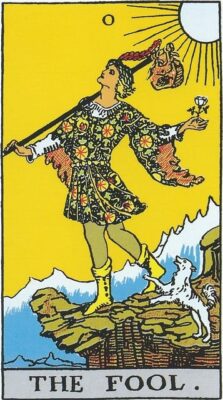 There is a common thread running from Woody Allen’s neurotic and slightly confused film character to the multi-diagnosed activist Greta Thunberg. These are people who are in therapy and have all sorts of mental conditions, and they are not ashamed of them, but rather publicise them. In addition, we have countless celebrities who come out and talk about their problems, such as dyslexia, overactivity, anxiety, phobia, etc.
There is a common thread running from Woody Allen’s neurotic and slightly confused film character to the multi-diagnosed activist Greta Thunberg. These are people who are in therapy and have all sorts of mental conditions, and they are not ashamed of them, but rather publicise them. In addition, we have countless celebrities who come out and talk about their problems, such as dyslexia, overactivity, anxiety, phobia, etc.
But that’s pretty normal nowadays, according to many. It’s nothing to worry about. Half of all young people take antidepressants. There’s nothing strange about that.
This is exactly what I want to point out, the normalisation of mental disorders. It has almost become a trend.
In the past people could also be weird, but we didn’t have names for the disorders, we just knew that Pete was an angry character, and that Mary was quiet and avoided talking to people unnecessarily. They were who they were. These differences were part of human behaviour. And as long as they functioned in society, they were allowed to be weird. Maybe they were good at other things, like digging ditches or cooking? Probably that was more important than their character in those days.
The fool could also be portrayed as a funny character and a truth-teller. Those who were slightly mad dared to tell the truth in front of kings and priests and often escaped punishment. The jester acted as a bridge between different worlds. Sometimes he would dress up in women’s clothes and thus cross the boundaries between the sexes, which could be seen as humorous and burlesque, but also a little unpleasant, intrusive or titillating for some.
Through the ingestion of various drugs, even ordinary people could put themselves in a fool’s state of mind, and history is littered with oracles inhaling hallucinogenic gases, shamans eating mushrooms, or wine drinking warriors solving unsolvable problems. However, there is a big difference here, as the mental stage is self-inflicted and temporary, the practitioner could go back to his normal life and social status. Temporary insanity is different from permanent insanity.
In the latter half of the 20th century, all kinds of mental abnormalities started to be portrayed more often in films and stories. The most common type is the violent psychopath, who has appeared in countless similar films. The mysterious serial killer eludes the police until they see a (often childish) pattern in his actions and are able to track him down and finally catch him. The psychopath has no inhibitions, he can do anything, which should make the films fairly predictable and pointless, but they attract viewers and it is a popular genre. Perhaps we interpret the absolute evil in the psychopath’s behaviour. He is like a predator without feelings, and somehow that tickles our senses.
Sometimes even evil people like Hitler, Stalin and Mao are described as psychopaths. This becomes a way of simplifying their political behaviour, instead of really examining what drove them. Here too, the psychopath becomes the ultimate evil. And we see an infantilisation of history.
Other conditions described in films can be autism, often autism savant, where the patient is excessively good at something, but otherwise incapable. We also see descriptions of sociopathy, schizophrenia and various hallucinatory conditions. The viewer is often lulled into a false reality. Sometimes the mental problems are shown in a positive light, described as merely another way of looking at reality, and in other cases the mental state is dangerous and violent. Both cases often involve extreme simplifications. Many contemporary films are based in whole or in part on characters with various mental health problems.
As we normalise these conditions, we allow people with various diagnoses into higher positions in society. I don’t think Joe Biden, who has dementia, would have had a chance to be president 20 years ago. His problem was more about age taking its toll, but it was also a mental disorder, which probably made his job as president much more difficult. And now we have Kamala Harris, whether she suffers from any mental problems or not we don’t know, but she has a manner of sudden bursts of laughter, repetitive reasoning and often loses the thread. Her partner Tim Waltz is also described as an odd character, with sudden loud movements and overactive behaviour.
Nothing strange at all really. Both Harris and Waltz are part of the great human family with all its anomalies and oddities. It’s beautiful that way. But the question is, should they be presidential candidates? And responsible for an entire country? And should Woody Allen be a role model for the average man? And whether Greta Thunberg should be a spokesperson for advanced climate research?







